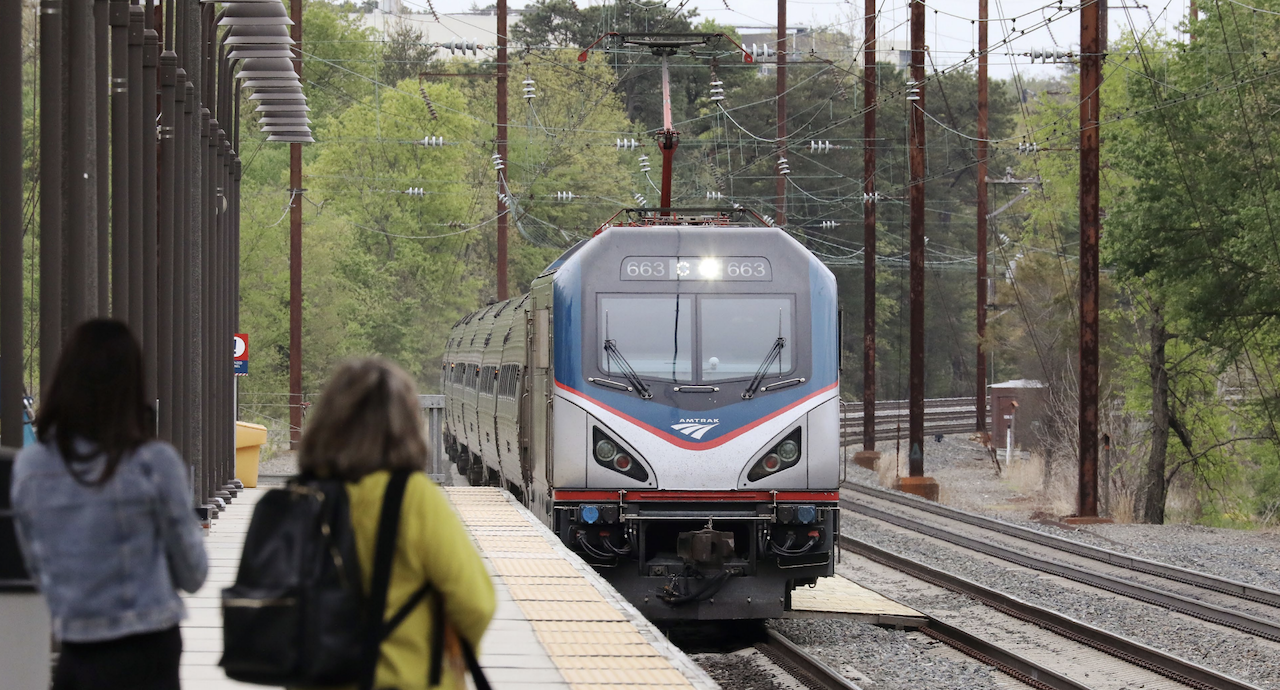
Amtrak OIG Identifies Opportunities to Reduce Locomotive Idling
Written by Carolina Worrell, Senior Editor
According to a report released on Oct. 18 by the Amtrak Office of Inspector General (OIG), Amtrak “has opportunities to use its own data to reduce excess locomotive idling and to train employees about its sustainability goals,” which will help the railroad achieve its goals of reducing greenhouse gas (GHG) emissions and increasing the purchase of carbon free and renewable electricity.
According to the report, Amtrak set a goal of reducing GHG emissions to 40% below its 2010 baseline by 2030. To help reach this target, the railroad set goals to purchase 100% carbon-free electricity by 2030 and to purchase 100% renewable electricity by 2035. To meet these goals, Amtrak has undertaken several initiatives, including buying more efficient electric locomotives for the Northeast Corridor (NEC) and more fuel-efficient diesel locomotives for use nationwide. It has also switched to more energy-efficient LED lighting in its facilities and stations. Further, the company has developed a plan to increase its purchases of carbon-free electricity to achieve the 2030 goal. And in July, Amtrak published its FY21 Sustainability Report highlighting projects across its regions and operations, as well as measured progress against its annual and long-term goals.
The OIG found, however, that Amtrak “could take additional steps to more easily achieve these goals, including leveraging data it already gathers to further reduce excessive idling of its diesel locomotives and mandating training on sustainability goals for management staff.” According to the report, while the company has reduced excess idling—idling for more than one hour—by 21% from October 2016 through March 2022, further efforts would “not only reduce emissions, but would reduce fuel costs and wear and tear on locomotives.”
According to the report, since 2016, Amtrak has tracked and reported monthly on excess idling. The company installed automatic engine stop/start technology in its locomotives that will shut down a locomotive after two hours of idling unless other conditions—like temperatures below 40 degrees Fahrenheit or the need to maintain air pressure in brake lines—require continued idling.
An OIG analysis of excess idling in Chicago, Amtrak’s largest locomotive maintenance facility, found more than 500 incidents in June 2021 when a locomotive shut down after two or more hours of idling and restarted less than 30 minutes later, sometimes repeatedly.
According to the report, back-to-back instances of excessive idling when factors like air temperature are not in play can indicate a mechanical problem or maintenance error. For example, a leaky air hose may trigger a locomotive to restart if its onboard system detects low air pressure. Because there is no mechanism to alert maintenance personnel about these issues, such as a text alert, staff are not able to easily identify locomotive restarts that result from malfunctions or maintenance errors, the report said.
The OIG also found that Amtrak was not currently using data it has available to better track when idling locomotives are powering passenger cars (head-end power on) and when they are not (head-end power off). Given that a locomotive uses about 30 gallons of diesel per hour when head-end power is on versus four gallons of diesel when head-end power is off, the company “could use this data to more accurately assess the cost of idling and better target its reduction efforts,” the report said.
To help address the report’s findings, the OIG made the following three recommendations to Amtrak:
- Further analyze the data it already collects and collect additional data to identify opportunities to reduce excess idling. This could include analyzing trend data on excess idling over time, by location, and by locomotive.
- Using these analyses, establish and implement a process to regularly target and reduce excess idling companywide. This could include developing a real-time alert for the appropriate mechanical staff that would allow them to make needed repairs to prevent excess idling.
- Make its sustainability awareness and core capability training mandatory for management employees.
In commenting on a draft of this report, Amtrak officials agreed with the OIG’s recommendations and identified actions they plan to take by September 2023 to address them.
DOWNLOAD THE FULL OIG REPORT BELOW:



